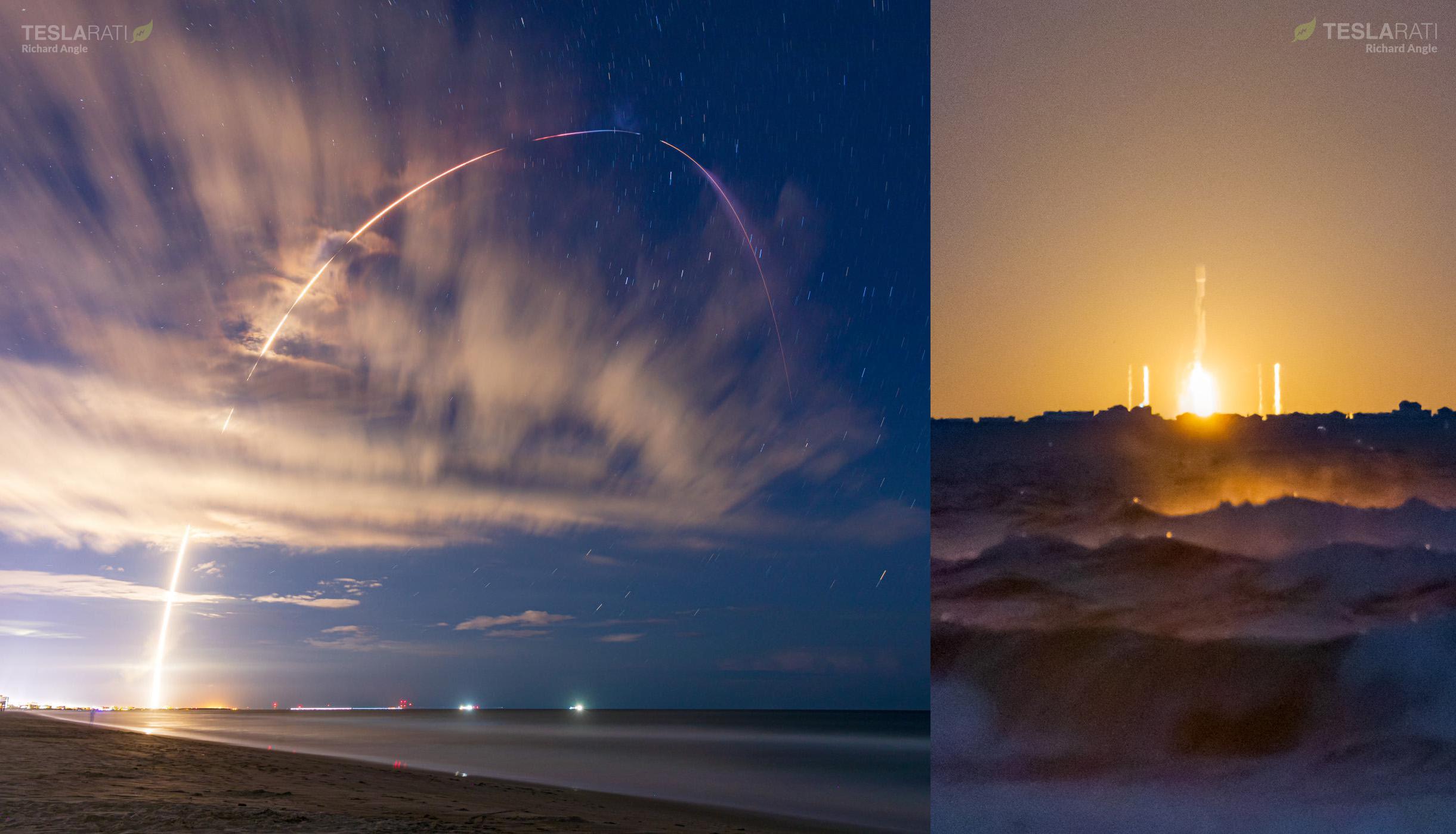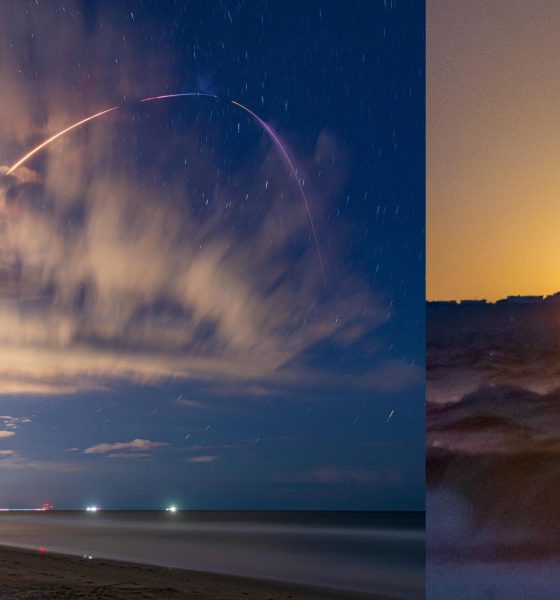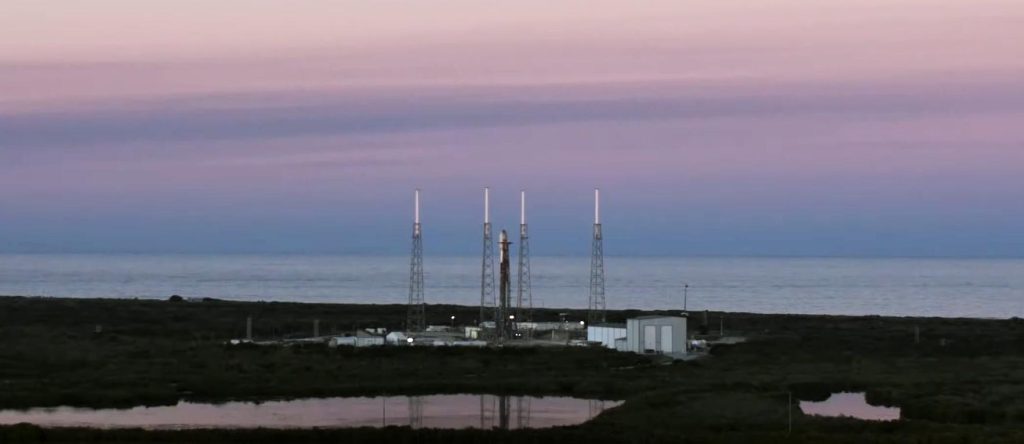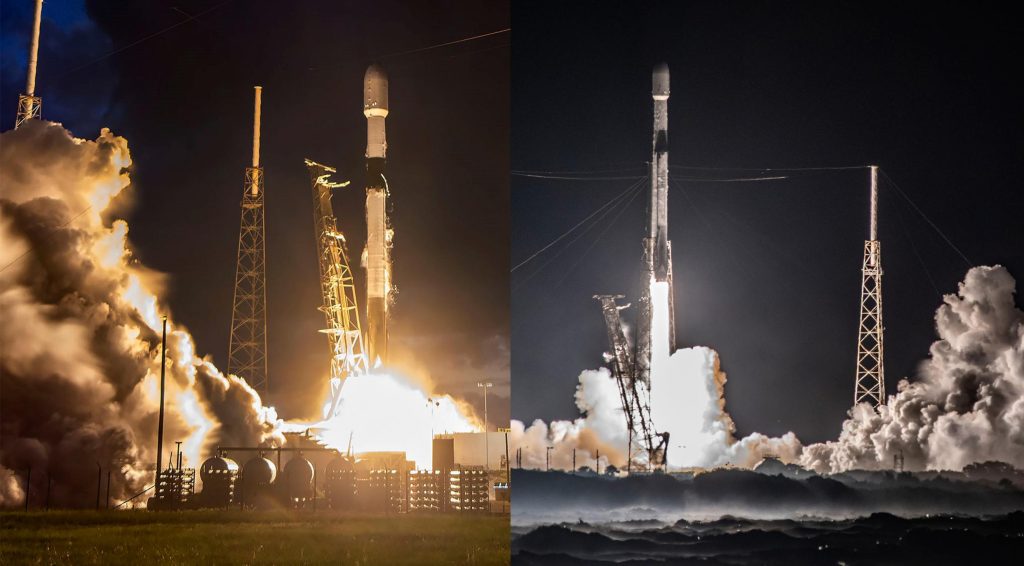

News
SpaceX breaks pad turnaround record with two Falcon 9 launches in six days
SpaceX has completed its 43rd launch of 2022 and 62nd dedicated Starlink launch overall, breaking a launch pad turnaround record in the process.
That pad – Cape Canaveral Space Force Station (CCSFS) Launch Complex 40 (LC-40) – is the single most important cog in SpaceX’s Falcon 9 launch machine, significantly increasing the significance of what might otherwise be ‘just’ another broken record for a company that is famous for never settling.
Following several delays linked to another weather-plagued Starlink launch (4-34) that flew out of the same pad, a Falcon 9 rocket lifted off from LC-40 on SpaceX’s Starlink 4-35 mission at 7:32 pm EDT (23:32 UTC), Saturday, September 24th. As usual, the mission used a flight-proven Falcon 9 booster (B1073), two flight-proven payload fairing halves, and an expendable second stage. As usual, all four components performed flawlessly, and a new batch of 52 Starlink V1.5 satellites was deployed about 15 minutes after liftoff.
Just the latest of dozens completed since May 2019, SpaceX’s Starlink missions have become extraordinarily routine – a testament to the company’s relentless pursuit of perfection, given just how difficult it is to successfully launch a rocket once. 62 dedicated Starlink launches later, Falcon 9 has successfully delivered every single Starlink satellite it has ever carried (almost 3400 spacecraft) into the proper orbit, losing only two boosters in the process.
But even though the missions have become routine, SpaceX has spent every waking second optimizing its rockets and operations to squeeze more performance and more cadence out of each part. The results can only be described as a resounding success. In 2018 and 2019, SpaceX launched an average of 17 Falcon rockets per year. SpaceX’s annual cadence grew to 26 launches in 2020 and 31 in 2021.
That progress pales next to the cadence SpaceX is on track to achieve in 2022. In less than nine months, the company has completed 43 Falcon 9 launches. Before the end of July, barely six months into the year, SpaceX had beaten its annual record of 31 launches. If it can maintain the same average pace it’s sustained over the last 12 months, SpaceX could realistically complete 58 Falcon launches in 2022. If it continues the even more impressive pace it’s achieved in Q3 (~17 launches), it could manage 60+ launches this year.
Only one other rocket family in history (the Soviet R-7) has successfully completed more launches in a calendar year.
SpaceX, of course, has no plans to accept the potentially record-breaking launch cadence it’s achieved as a new status quo. Just two-thirds of the way through 2022, CEO Elon Musk revealed that SpaceX is targeting up to 100 launches in 2023. As previously reported on Teslarati, while that figure seems implausible at first glance, it was still within the realm of possibility given SpaceX’s already established capabilities.
Just a few weeks later, Musk’s 100-launch target has gone from barely within reach to a serious – if still unlikely – possibility thanks to the record SpaceX broke with Starlink 4-35. SpaceX’s latest Starlink mission lifted off from LC-40 just 5.97 days after Starlink 4-34 launched from the same pad, smashing its old turnaround record (7.67 days) by almost 25%.
For LC-40, already SpaceX’s workhorse pad and the source of the company’s fastest pad turnaround, the new record means, in theory, that one of its three pads can now singlehandedly support up to 60 Falcon 9 launches per year. Assuming that any launch pad can or will sustainably operate close to its record turnaround time for an entire year would be unwise. But, at minimum, the new record gives SpaceX new margins that it can use to significantly increase LC-40’s annual cadence in a more sustainable way. In 2022, LC-40 has averaged 12.7 days per launch. In Q3, it’s on track to average about 10.3 days per launch.


Most importantly, there’s evidence that SpaceX didn’t simply manage a heroic one-time feat with Starlink 4-35. Confirmed by Next Spaceflight, Ben Cooper, and airspace restriction filings, SpaceX has tentative plans to launch Starlink 4-36 from LC-40 as early as 6:36 pm EDT on Friday, September 30th – a turnaround slightly faster than the new record. Another Falcon 9 launch out of LC-40 – EchoStar’s Galaxy 33/34 mission – could follow Starlink 4-36 as early as October 5th, although that mission is more likely to slip a day or two.
There’s a big risk that Storm/Hurricane Ian will create unacceptable weather conditions, forcing SpaceX to delay the launch, but for now, there’s still a chance.

Elon Musk
Elon Musk’s X will start using a Tesla-like software update strategy
The initiative seems designed to accelerate updates to the social media platform, while maintaining maximum transparency.

Elon Musk’s social media platform X will adopt a Tesla-esque approach to software updates for its algorithm.
The initiative seems designed to accelerate updates to the social media platform, while maintaining maximum transparency.
X’s updates to its updates
As per Musk in a post on X, the social media company will be making a new algorithm to determine what organic and advertising posts are recommended to users. These updates would then be repeated every four weeks.
“We will make the new 𝕏 algorithm, including all code used to determine what organic and advertising posts are recommended to users, open source in 7 days. This will be repeated every 4 weeks, with comprehensive developer notes, to help you understand what changed,” Musk wrote in his post.
The initiative somewhat mirrors Tesla’s over-the-air update model, where vehicle software is regularly refined and pushed to users with detailed release notes. This should allow users to better understand the details of X’s every update and foster a healthy feedback loop for the social media platform.
xAI and X
X, formerly Twitter, has been acquired by Elon Musk’s artificial intelligence startup, xAI last year. Since then, xAI has seen a rapid rise in valuation. Following the company’s the company’s upsized $20 billion Series E funding round, estimates now suggest that xAI is worth tens about $230 to $235 billion. That’s several times larger than Tesla when Elon Musk received his controversial 2018 CEO Performance Award.
As per xAI, the Series E funding round attracted a diverse group of investors, including Valor Equity Partners, Stepstone Group, Fidelity Management & Research Company, Qatar Investment Authority, MGX, and Baron Capital Group, among others. Strategic partners NVIDIA and Cisco Investments also continued support for building the world’s largest GPU clusters.
News
Tesla FSD Supervised wins MotorTrend’s Best Driver Assistance Award
The decision marks a notable reversal for the publication from prior years, with judges citing major real-world improvements that pushed Tesla’s latest FSD software ahead of every competing ADAS system.

Tesla’s Full Self-Driving (Supervised) system has been named the best driver-assistance technology on the market, earning top honors at the 2026 MotorTrend Best Tech Awards.
The decision marks a notable reversal for the publication from prior years, with judges citing major real-world improvements that pushed Tesla’s latest FSD software ahead of every competing ADAS system. And it wasn’t even close.
MotorTrend reverses course
MotorTrend awarded Tesla FSD (Supervised) its 2026 Best Tech Driver Assistance title after extensive testing of the latest v14 software. The publication acknowledged that it had previously criticized earlier versions of FSD for erratic behavior and near-miss incidents, ultimately favoring rivals such as GM’s Super Cruise in earlier evaluations.
According to MotorTrend, the newest iteration of FSD resolved many of those shortcomings. Testers said v14 showed far smoother behavior in complex urban scenarios, including unprotected left turns, traffic circles, emergency vehicles, and dense city streets. While the system still requires constant driver supervision, judges concluded that no other advanced driver-assistance system currently matches its breadth of capability.
Unlike rival systems that rely on combinations of cameras, radar, lidar, and mapped highways, Tesla’s FSD operates using a camera-only approach and is capable of driving on city streets, rural roads, and freeways. MotorTrend stated that pure utility, the ability to handle nearly all road types, ultimately separated FSD from competitors like Ford BlueCruise, GM Super Cruise, and BMW’s Highway Assistant.
High cost and high capability
MotorTrend also addressed FSD’s pricing, which remains significantly higher than rival systems. Tesla currently charges $8,000 for a one-time purchase or $99 per month for a subscription, compared with far lower upfront and subscription costs from other automakers. The publication noted that the premium is justified given FSD’s unmatched scope and continuous software evolution.
Safety remained a central focus of the evaluation. While testers reported collision-free operation over thousands of miles, they noted ongoing concerns around FSD’s configurable driving modes, including options that allow aggressive driving and speeds beyond posted limits. MotorTrend emphasized that, like all Level 2 systems, FSD still depends on a fully attentive human driver at all times.
Despite those caveats, the publication concluded that Tesla’s rapid software progress fundamentally reshaped the competitive landscape. For drivers seeking the most capable hands-on driver-assistance system available today, MotorTrend concluded Tesla FSD (Supervised) now stands alone at the top.
News
Elon Musk’s Grokipedia surges to 5.6M articles, almost 79% of English Wikipedia
The explosive growth marks a major milestone for the AI-powered online encyclopedia, which was launched by Elon Musk’s xAI just months ago.

Elon Musk’s Grokipedia has grown to an impressive 5,615,201 articles as of today, closing in on 79% of the English Wikipedia’s current total of 7,119,376 articles.
The explosive growth marks a major milestone for the AI-powered online encyclopedia, which was launched by Elon Musk’s xAI just months ago. Needless to say, it would only be a matter of time before Grokipedia exceeds English Wikipedia in sheer volume.
Grokipedia’s rapid growth
xAI’s vision for Grokipedia emphasizes neutrality, while Grok’s reasoning capabilities allow for fast drafting and fact-checking. When Elon Musk announced the initiative in late September 2025, he noted that Grokipedia would be an improvement to Wikipedia because it would be designed to avoid bias.
At the time, Musk noted that Grokipedia “is a necessary step towards the xAI goal of understanding the Universe.”
Grokipedia was launched in late October, and while xAI was careful to list it only as Version 0.1 at the time, the online encyclopedia immediately earned praise. Wikipedia co-founder Larry Sanger highlighted the project’s innovative approach, noting how it leverages AI to fill knowledge gaps and enable rapid updates. Netizens also observed how Grokipedia tends to present articles in a more objective manner compared to Wikipedia, which is edited by humans.
Elon Musk’s ambitious plans
With 5,615,201 total articles, Grokipedia has now grown to almost 79% of English Wikipedia’s article base. This is incredibly quick, though Grokipedia remains text-only for now. xAI, for its part, has now updated the online encyclopedia’s iteration to v0.2.
Elon Musk has shared bold ideas for Grokipedia, including sending a record of the entire knowledge base to space as part of xAI’s mission to preserve and expand human understanding. At some point, Musk stated that Grokipedia will be renamed to Encyclopedia Galactica, and it will be sent to the cosmos.
“When Grokipedia is good enough (long way to go), we will change the name to Encyclopedia Galactica. It will be an open source distillation of all knowledge, including audio, images and video. Join xAI to help build the sci-fi version of the Library of Alexandria!” Musk wrote, adding in a later post that “Copies will be etched in stone and sent to the Moon, Mars and beyond. This time, it will not be lost.”








